Our memories of Spain 2025:
Yet another great trip to Spain, our 6th since 2017, and that's with Covid. We have a number of wonderful memories, including:
- flamenco at Tabanco El Pasaje, including the tapas and sherry we enjoyed during the performance
- Virginie for getting us a table at the flamenco show
- Semana Santa, including the ornate floats, marching bands and sheer volume of people
- navigating the masses of people trying to return to La Gitanilla during Semana Santa
- our hospitable hosts - special mention to Eric, Eli and Virginie
- momma duck and her brood at Ardea Purpurea
- fresh orange juice at Ardea Purpurea
- a number of our meals at Ardea Purpurea - the serrano ham, lamb shoulder and mushroom risotto
- the nesting storks
- the spring wildflowers
- our super cool room, with Japenese toilet, at La Casa del Consul
- the 'birthday' cava Eric gave us, enjoyed on La Casa del Consul's rooftop terrace
- the surprising enjoyable walkable Cadiz with its narrow streets, neat buildings and balconies
- breakfasts in Cadiz
- enjoying the parks of Cadiz
- street music in Cadiz
- birthday dinner in at La Raiz - jamon Iberico, mushroom croquetas, entrecote de lamb and a nice wine
- all our choice of lodgings - except Pearson's 'homeless' shelter (see below)
- our room, Las Aves, at La Fructuosa with its elevated views over the countryside
- the beautiful white village of Gaucin
- breakfasts at La Fructuosa in its beautiful restaurant
- the hand-written menu, cheese plate and Brits at Azuelta Bar
- sheep taking over a recreation area
- cork trees
- a wonderful dinner at El Muelle de Ariatte, especially Gayle's unique goose egg
- the traditional Cortijo las Piletas, with its views of the hillside and holm oak trees
- the drives through the countryside in all directions from Cortijo las Piletas
- Cortijo las Piletas' Food Corner and our indoor 'picnic'
- in general the weather being somewhat cooler and cloudier than expected
- missing our connecting flight in Lisbon
- spending the night in Pearson's 'homeless' area - no one said these were only 'good' memories
Expenses (based on average exchange rate 1 euro = $1.5649 Cdn):
Here are the costs of our 15 day trip:
$ 2,447 airfare to / from Spain; seat selection (excluding the $4,074 for two one way tickets home)
$ 3,471 lodging ($232 Cdn $ per night)
$ 1,511 food ($101 Cdn $ per day for dinner etc. including wine; breakfasts are included in lodging)
$ 819 vehicle ($532 or $38 per day for the vehicle; fuel of $196; and parking of $91)
$ 0 souvenirs
$ 55 entrance - Flamenco show
$ 48 miscellaneous - primarily tips
$ 8,351 for 15 days
The total cost excluding airfare and souvenirs (i.e. lodging, food, entrances, vehicle and miscellaneous) was $5,904 or $394 per day, with lower lodging and food costs compared to recent trips.
Following are the average costs of this and our five previous trips to Spain.
Total Lodging Food Vehicle
2017 $ 408 160 euros / $ 250 63 euros / $ 93 $ 28
2018 $ 380 146 euros / $ 229 60 euros / $ 93 $ 26
2019 $ 375 146 euros / $ 227 68 euros / $104 $ 22
2023 $ 423 180 euros / $ 266 79 euros / $115 $ 28
2024 $ 527 204 euros / $ 300 77 euros / $113 $ 68
2025 $ 394 148 euros / $ 232 64 euros / $101 $ 55
Costs this trip were somewhat less than the past couple. Our lodgings, with which we were very happy, were not as expensive as recent trips, especially compared to the big bucks, er euros we spent in Cordoba and Toledo in 2024. Our food costs - essentially dinner with wine - were somewhat less but would have been similar had we not essentially skipped two dinners at the end of the trip. Otherwise costs have been consistent over the years, increasing more or less with inflation. The one spike is the huge increase in car rental in 2024. The cost did include a one-way charge although that does not account for a significant portion of the increase.
Our lodging ranged from a low of 122 euros to a high of 186 euros. All except Casa del Consul included good breakfasts.
Here is where we stayed, the amount we paid (in euros) and links to their websites.
186 euros Andrea Purpurea Villamanrique www.ardeapurpurea.com
138 euros* Casa del Consul Cadiz www.lacasadelconsul.com
122 euros La Fructuosa Gaucin www.lafructuosa.com
139 euros Cortijo las Piletas Ronda www.cortijolaspiletas.com
158 euros La Gitanilla Jerez de la Frontera www.lagitanilla.com
141 euros Vertice Hotels Seville www.verticehotels.com
0 euros Pearson airport Toronto
* no breakfast
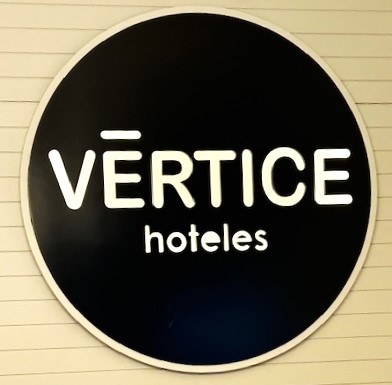
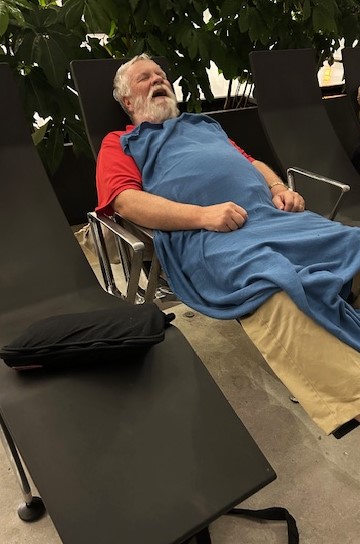
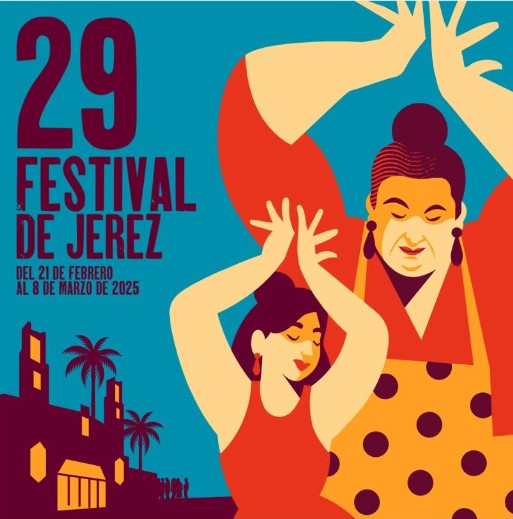
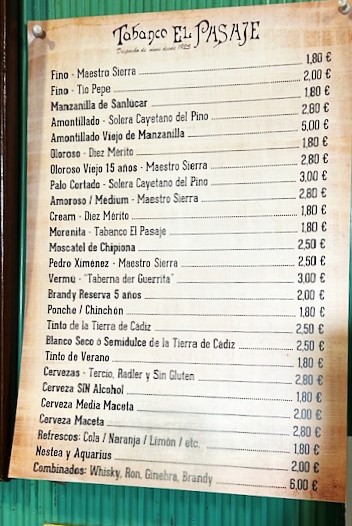

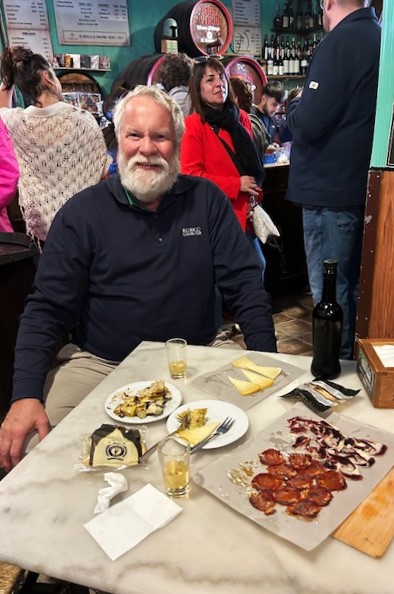
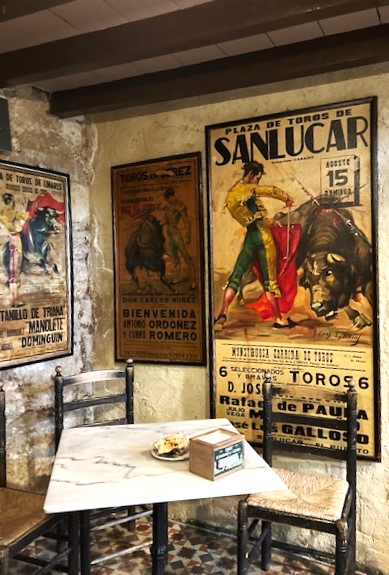
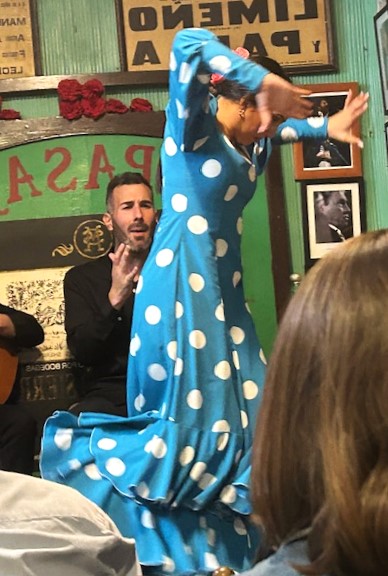

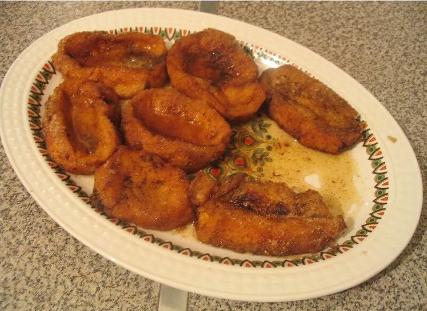
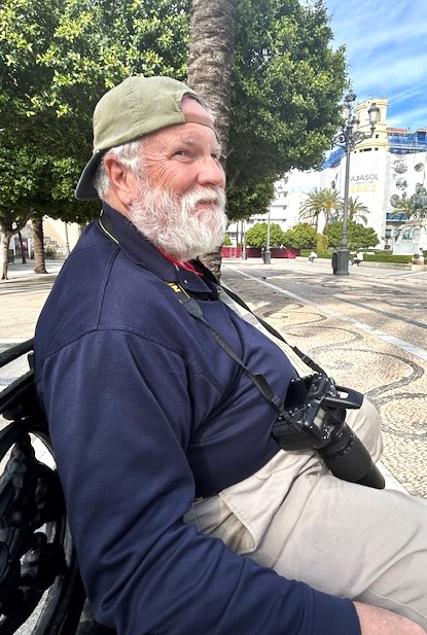
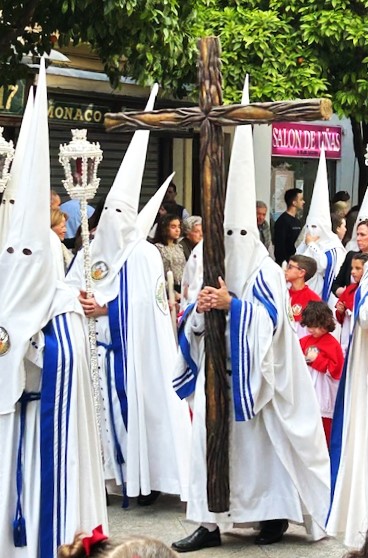
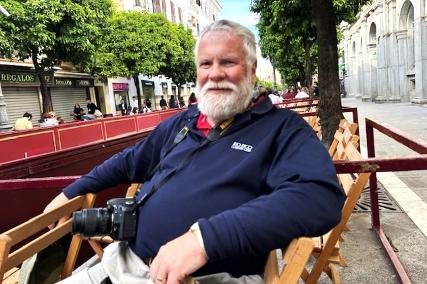
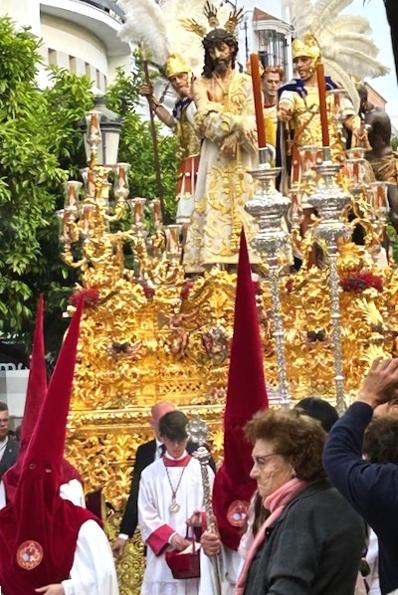
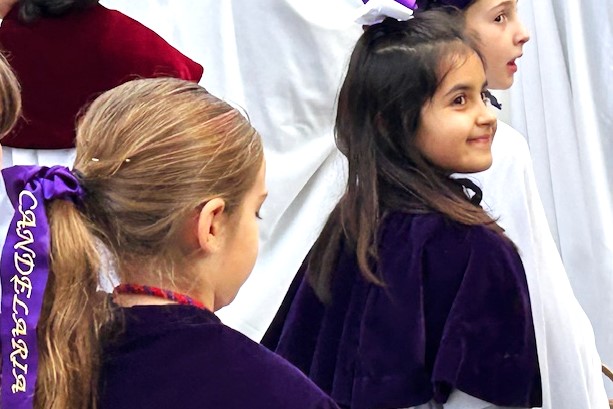
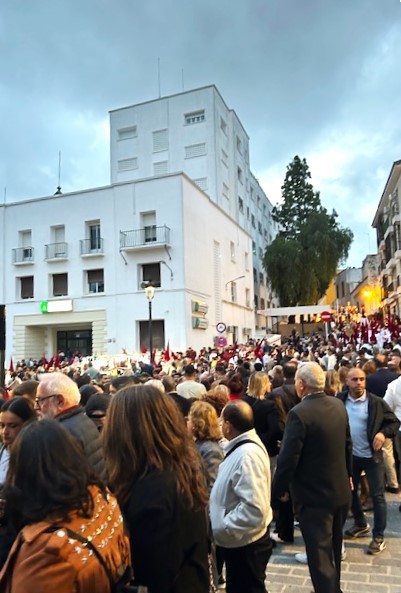
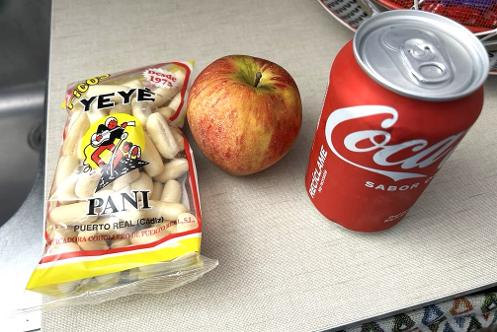
One feels very welcome when on their website in large print we read "Our House is Your House".
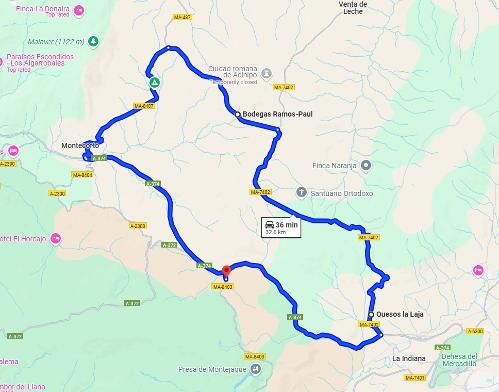

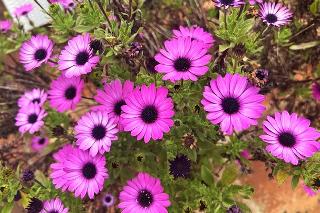
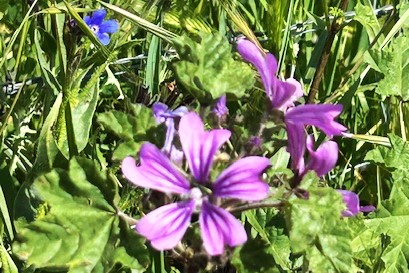
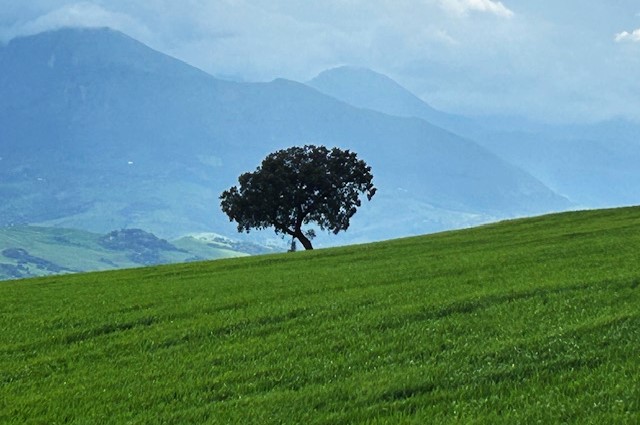
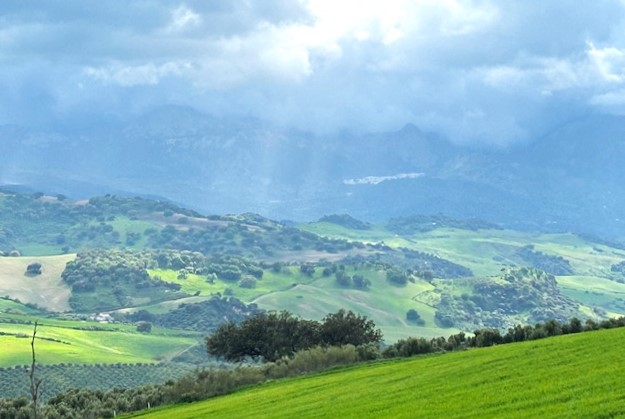
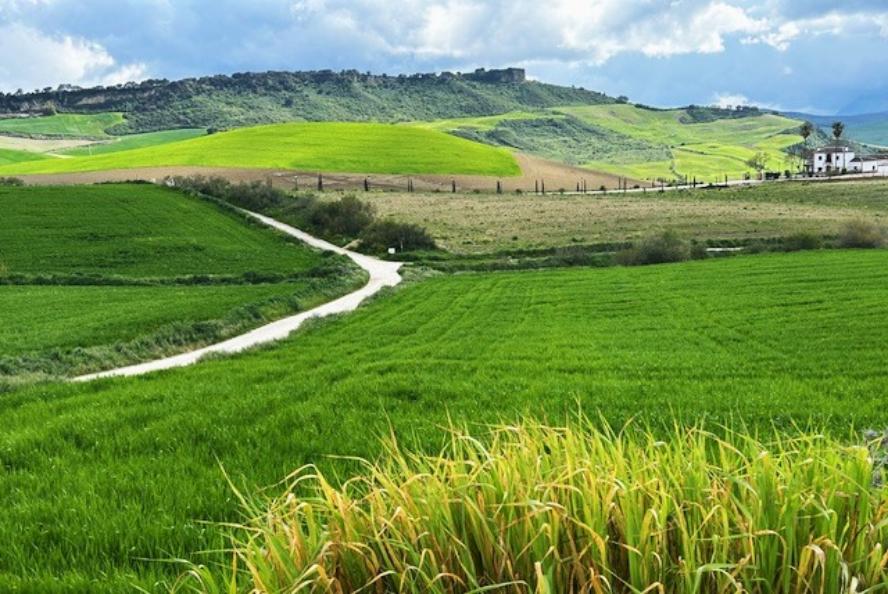
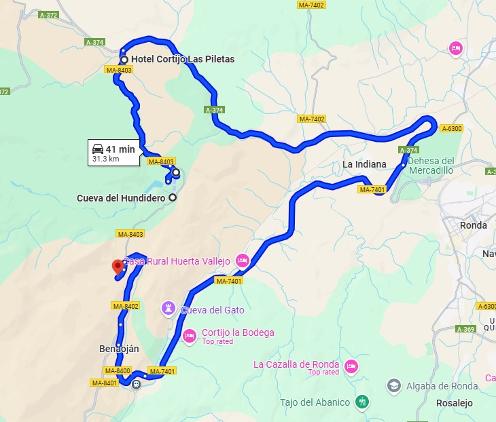
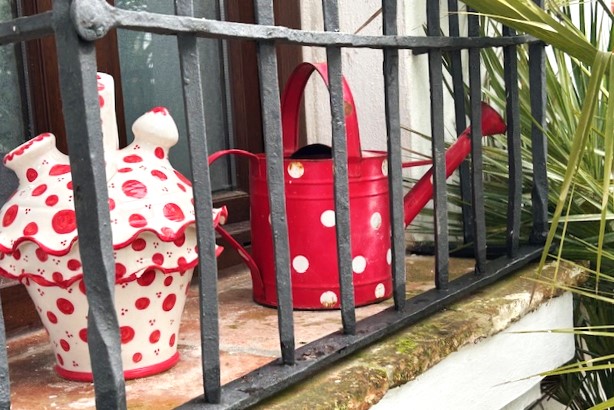
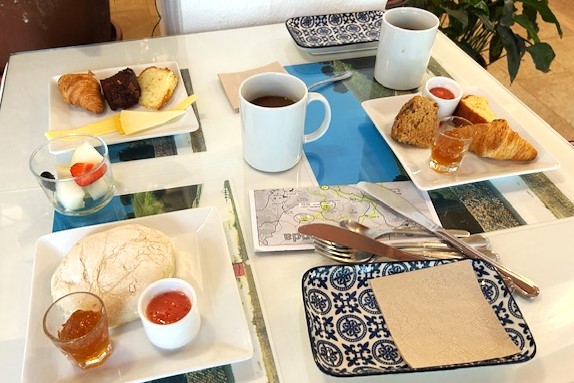



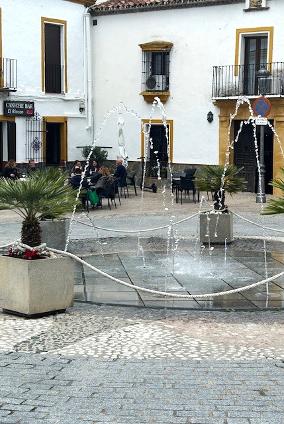
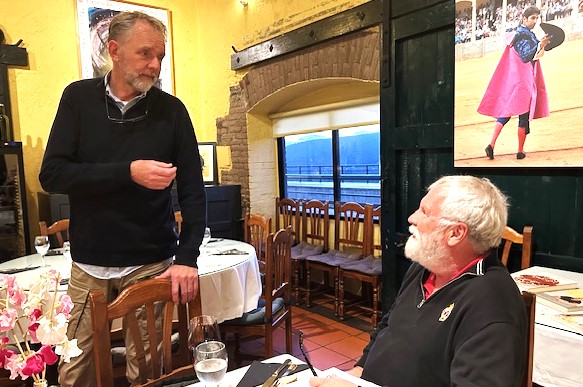
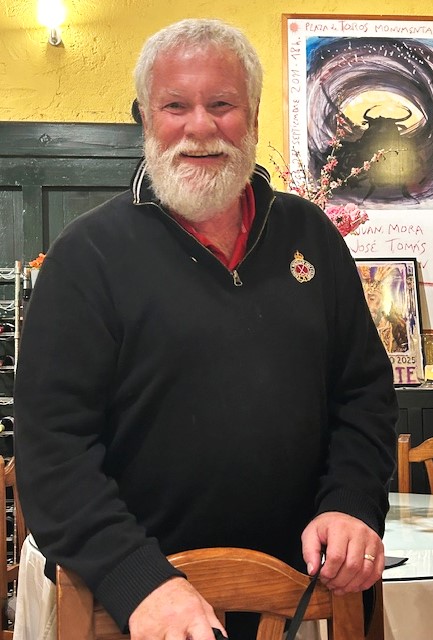
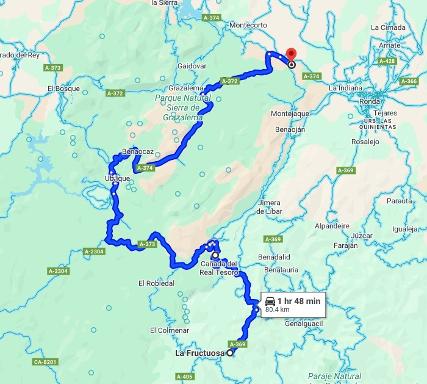
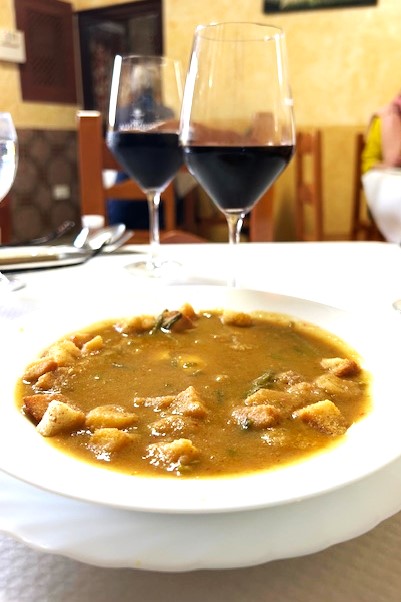
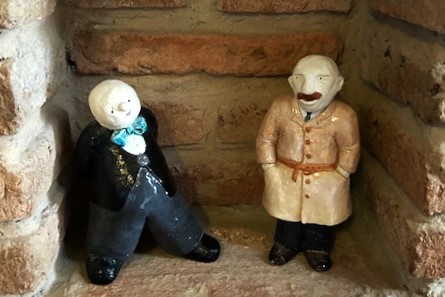
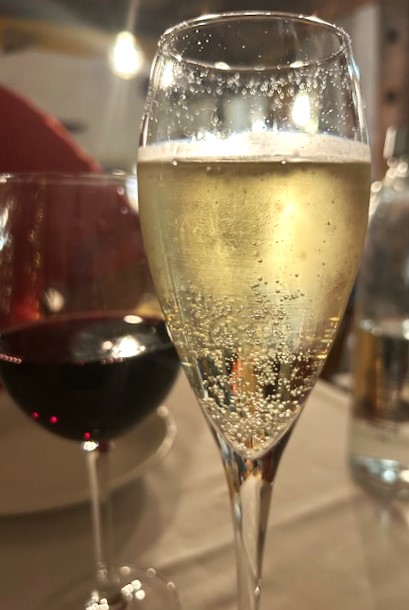
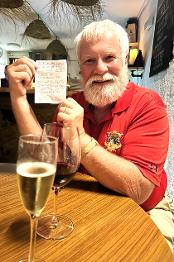
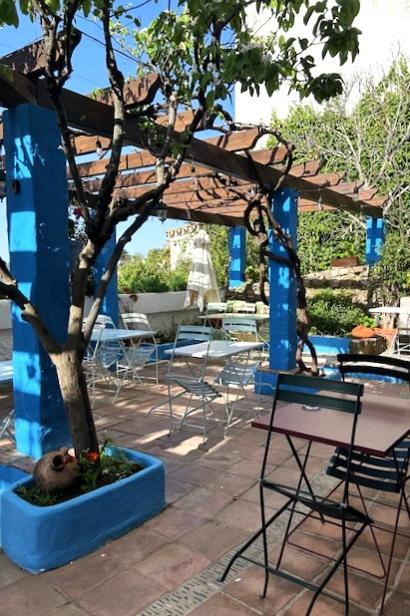
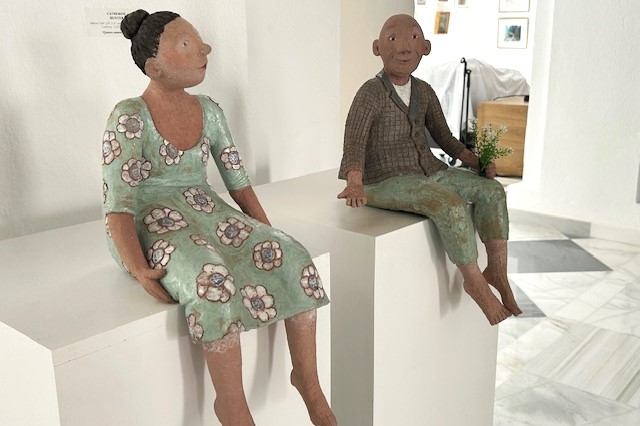
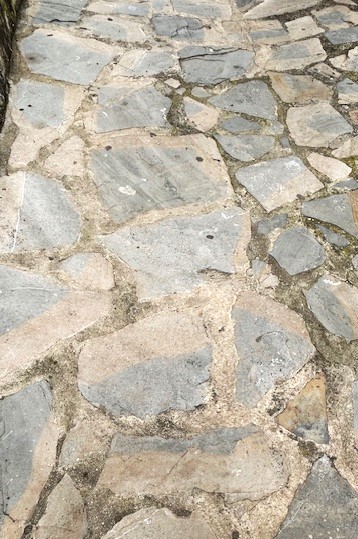
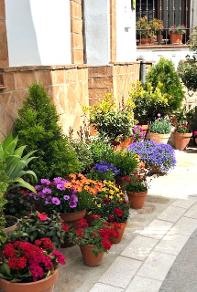
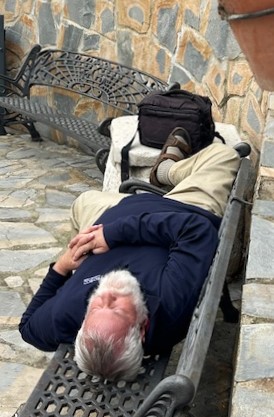
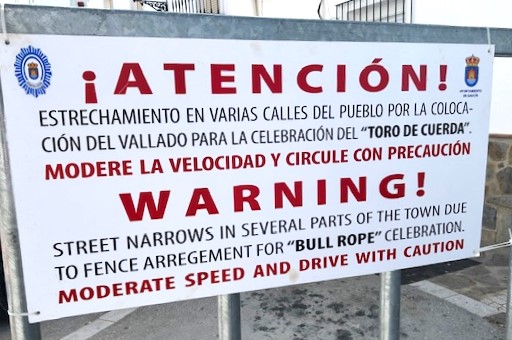
The following taken from ' Visit Gaucin' website.
The festival consists of running a bull tied by the horns through the streets of the town.
The run is directed by those with proven experience and it is they who are charged with animating the animal by waving their capes (performing capotazos) and handling the rope.
Although increasingly controversial, the Cuerda remains a popular festival and many of its supporters see themselves as guardians of a cultural treasure that must be preserved. Among aficionados the bull is respected and its mistreatment is considered an act of cowardice. Bragging in front of the bull is not rewarded and at no time is physical suffering of the bull be sought or allowed.
In Gaucin the festival begins on Easter Saturday when the officials of the “comisión del toro” and a large number of fans go to the ranch to witness the collection of the bulls and to accompany them on their journey to the village. The same Saturday an event is held for the children of the village in which a fictitious bull is run through the streets of Gaucín and in the early evening there is a “pre toro party” for all to enjoy.
For most Gaucineños, this festival is of great importance and provokes much passion and emotion, not least because it involves the reunion with friends and relatives that years ago left Gaucín as emigrants. It is very common to hear them bid farewell at the end of the weekend with the phrase “Nos vemos pá el toro” – we will see each other at the Toro!
While we were in Gaucin preparations were taking place for the 'Toro de Cuerda' or roped bull run, an event celebrated in Gaucin each Easter Sunday, the second most loved festival in Gaucin, after September's Santo Nino.
Although dating back centuries the 'Toro de Cuerda' is now celebrated in less than a hundred towns across Spain. Each town's festival is different with Gaucin's taking on some religious significance, always taking place at the end of Holy Week.
Photo below taken from ' Visit Gaucin' website.

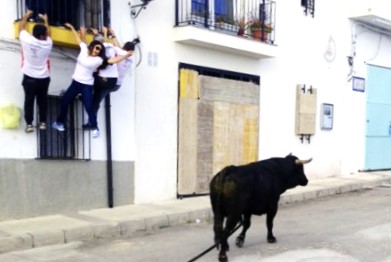
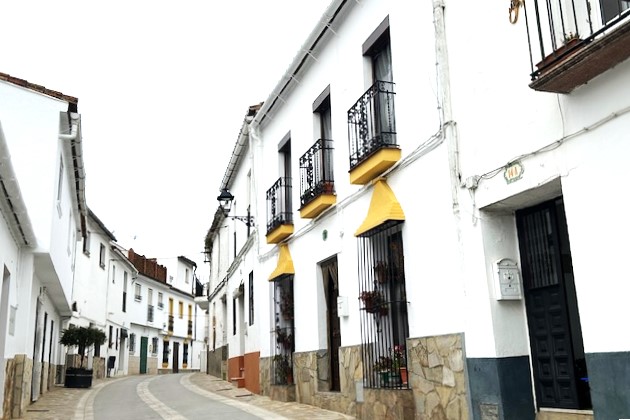
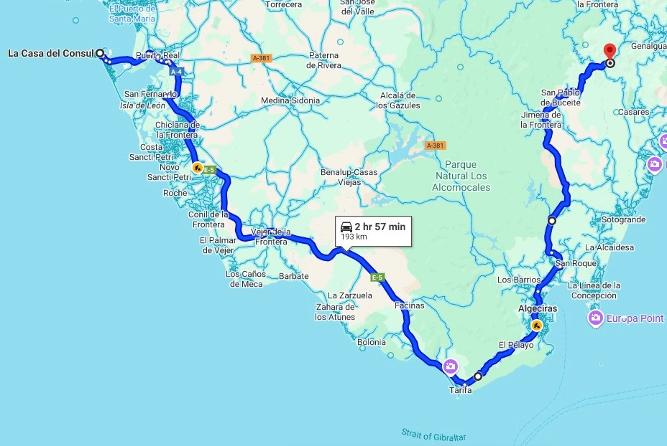
For breakfast we stopped at a small roadside 'Venta'. In Spain, a 'venta' is a roadside inn, often isolated, that serves as a stop for travelers. They can be considered similar to inns, but are typically found on rural roads or in less populated areas, unlike traditional inns (mesones or posadas) which are closer to towns and villages. We each had a coffee, a tortilla and Norm a tapas of toro (beef).
Gaucin, located in the west of the province of Malaga is one of the towns making up the Serrania de Ronda region. The area includes a varied landscape of cork oaks, holm oaks and pine groves along with chestnut and wild olive trees.
The town is located below the Aguila Castle, of great strategic importance along with Gibralter in forming the defence of the south.
The approach from the south-west is breath-taking as the whitewashed walls of virtuallly every building stands out as the most noticeable feature against the landscape. From in the town, and especially our room the view on a clear day to the coast, Gibralter and Morocco are spectacular.
Gaucin has turned out to be a real ex-pat community with, according to our host, a quarter of the permancent residents now being ex-pats, and as a result the village has a number of excellent restaurants.
We are staying at La Fructuosa, a small boutique hotel with a nice restaurant owned by a French couple, Daniel and Catherine.
However with a number of restaurants closed Monday and Tuesday, for dinner tonight we chose to eat at La Raiz where we were treated excellently by Jonathan. Being my 'birthday' meal I didn't hold back.
One thing we have noticed this trip is the absence of olive oil on one's table - always available if one asks but not present as in the past. Here at La Raiz not only was there olive oil but we both agreed it was particularly good.
Although they were out of our choice of wine Jonathan recommended an Arzuga Crianza 2022 from the Ribeiera Del Duero. An excellent recommendation it was very much enjoyed. I then ordered the Jamon Iberico, from pigs that we were told were fed on chestnuts. I'm not sure I could detect the subtely but the slices, cut a bit thicker than usual, were delicious. Gayle then had a selection of croquetas - mushroom, spinach and zucchini while Norm had the Entrecot de Cordero (lamb) for his main course, both served with padron peppers. Both excellent. Unusually we both had dessert - Gayle the Brownie con Helado (ice cream) and Norm the Crumble with Manzano (apple crumble also with ice cream), of course with a candle.
Interestingly there was another guest having dinner who also was celebrating his birthday today ... what were the odds - I know you could figure it out if you knew how many other guests were present this evening but you get my drift?
To bring the meal to a close Jonathan offered us a liqueur - Gayle chose the Limoncello while Norm the Miura. a wild cherry liqueur from the area around Sevilla.
A short walk returned us to La Fructuosa to end the day.
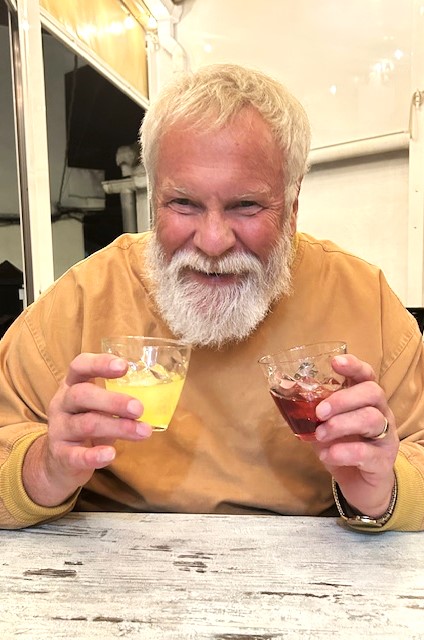
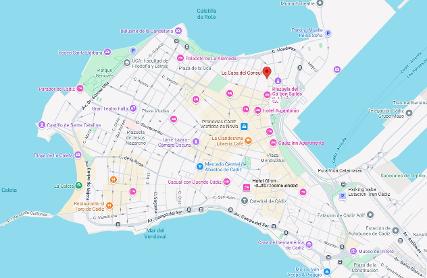
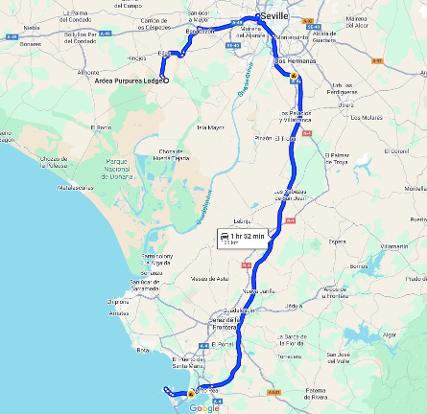
It originated between 1920 and 1930 with the colonization of the marsh for the cultivation of rice, the main and almost only source of wealth for the municipality. The surrounding towns have exploited the lands of Villafranco del Guadalquivir for livestock farming for two centuries. The colonization carried out in the Guadalquivir marshes between the 1920s and 1930s for the cultivation of rice gave rise to the creation of this town.
As we were driving towards Isla Mayor we encountered flooding on the road. A vehicle was on the other side with guys hanging around and the car's hood up. We quickly decided we were not going to attemp to drive through. Fortunately another fellow passed by, came to the same conclusion and motioned for us to follow him as he too was headed to Isla Mayor. Sadly we did not take a photo of the flooded road.
As it turned out the drive was circuitous although in doing so it did take us through parts of the Donana Nature Park where we did see a large number of birds and waterfowl. The town of Isla Mayor caught us a bit off guard as we were expecting more nature / interpretivie centres etc. Rather, the town is quite industrial focusing, as mentioned before, on the production of rice. It was an interesting experience and glimpse into the area but had we done a bit more research we would have better understood what the town / area offered.
Because of the detour and time it took we chose not to return via Aznalcazr as originally planned but rather followed the exact same route back to Ardea Purpurea.
We enjoyed another nice dinner, being our last night. Norm repeated the Jamon Iberico de bellota 'media' plate from the first night followed by the Presa iberica de bellota - Iberian pork shoulder blade with migas (Spanish bread crumbs), Padron green peppers and romesco sauce - a traditional Spanish sauce of sun dried tomatoes, roasted red peppers and red wine vinegar that originated from Valls in the province of Tarragona in Catalonia. The fishermen in the area made this sauce to be eaten with fish, with its use since expanded. An excellent dish. Gayle had a very creative and delicious salad - Ensalade crujiente de parmesana y crema de queso parmesana con hoja de roble, pina y tomates confitadoes - a crunchy parmesan salad with parmesan cheese, oak leaf lettuce, pineapple and candied tomatoes. Also excellent. We finished with a scoop of chocolate ice-cream.
Beyond the taste of our meals our dishes have been so attractively presented.

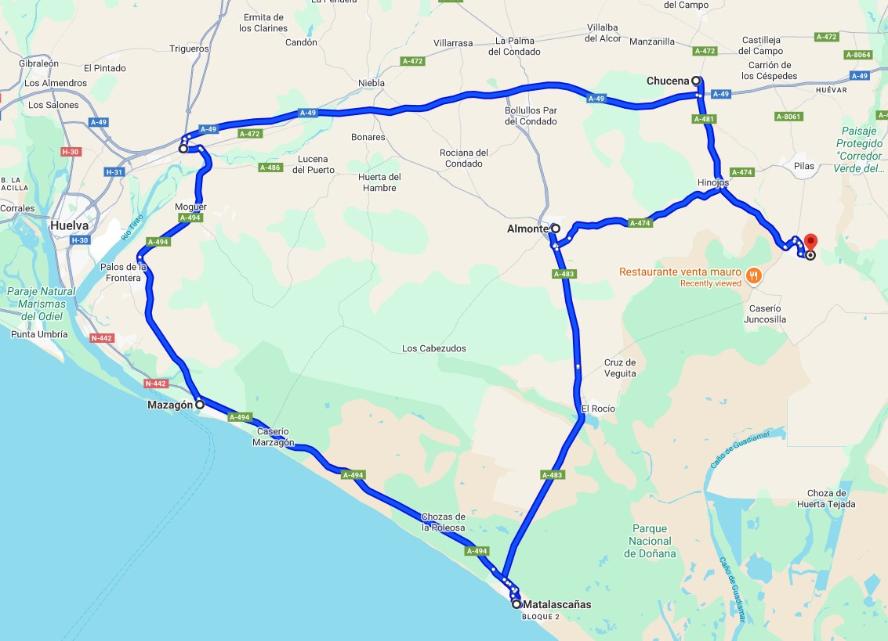
- it was within an our drive of Seville airport
- it was out in the country, and
- it has a restaurant.
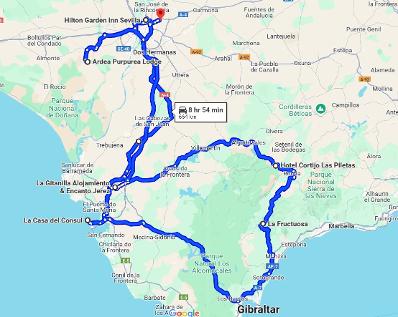
- 4 nights at Andrea Purpurea Lodge west of Seville, then
- 3 nights at La Casa del Consul, in Cadiz, after which
- 3 nights at La Fructuosa in the town of Guacin, followed by
- 3 nights at Cortijo Las Pelatas near Ronda, and then two one nighters, the first
- in Jerez de la Frontera at La Gitanilla, and
- the second near the airport, still to be determined